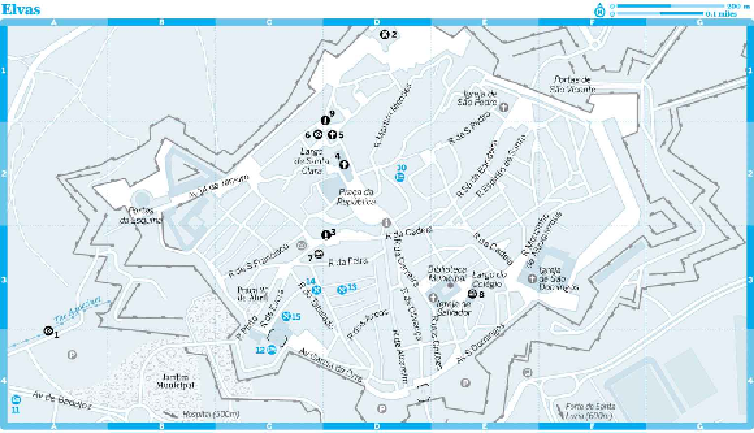Travel Reference
In-Depth Information
ated military technology. Its moats, fort and heavy walls would indicate a certain paranoia
if it weren't for Elvas' position, only 15km west of Spain's Badajoz. Inside the stout town
walls, you'll find a lovely town plaza, some quaint museums and very few foreign visitors
- aside from the occasional flood of Spanish day trippers. Although there's not much to
hold your attention beyond a day, Elvas is an interesting place to visit, with its evocative
frontier-post atmosphere, its narrow medina-like streets and its extraordinary, forbidding
walls and buttresses. It has a few excellent eateries.
History
In 1229 Elvas was recaptured from the Moors after 500 years of fairly peaceful occupa-
tion. The following centuries saw relentless attacks from Spain, interrupted by occasional
peace treaties. Spain only succeeded in 1580, allowing Felipe II of Spain (the future
Felipe I of Portugal) to set up court here for a few months. But the mighty fortifications
were seldom breached: in 1644, during the Wars of Succession (1640-68), the garrison
held out against a nine-day Spanish siege and, in 1659, just 1000 - an epidemic had wiped
out the rest - withstood an attack by a 15,000-strong Spanish army.
The fortifications saw their last action in 1811, when the Duke of Wellington used the
town as the base for an attack on Badajoz during the Peninsular War.

